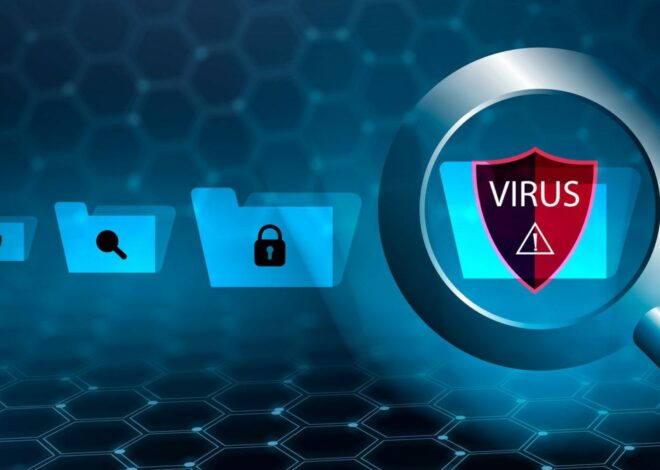
Why Endpoint Detection & Response (EDR) is Crucial for Your Cybersecurity Strategy?
In today’s digital age, cybersecurity is more important than ever before. With cyber threats becoming increasingly sophisticated and complex, businesses of all sizes are at risk of falling victim to a data breach. Endpoint Detection & Response (EDR) has emerged as a crucial component of any cybersecurity strategy that aims to keep hackers at bay. In this blog post, we’ll explore the reasons why EDR should be an essential part of your security arsenal and how it can help you protect your business against unexpected cyber attacks. So buckle up and get ready to learn everything you need to know about Endpoint Detection & Response!
Table of Contents
What is Endpoint Detection & Response (EDR)?
How EDR Can Help Your Organization
The Different Types of EDR Solutions
Pros and Cons of EDR
How to Choose the Right EDR Solution for Your Organization
Conclusion
What is Endpoint Detection & Response (EDR)?
Endpoint detection and response (EDR) is a cybersecurity strategy that helps organizations detect, investigate and respond to endpoint threats. EDR tools collect data from endpoint devices, such as laptops, workstations and servers, and use this data to detect malicious activity. Once suspicious activity is detected, EDR tools can help organizations investigate the issue and take appropriate action to mitigate the threat.
EDR tools are an important part of any comprehensive cybersecurity strategy. By helping organizations detect, investigate and respond to endpoint threats, EDR tools can significantly reduce the impact of cyberattacks.
How EDR Can Help Your Organization
Endpoint detection and response (EDR) is a critical component of any modern cybersecurity strategy. By identifying and responding to security incidents at the endpoint level, EDR can help organizations contain and mitigate the damage from attacks.
In today’s threat landscape, traditional antivirus solutions are no longer enough to protect against sophisticated attacks. EDR provides a much needed layer of defense by continuously monitoring for suspicious activity and providing visibility into the behavior of endpoints on the network.
When combined with other security controls such as firewalls, intrusion detection/prevention systems, and data loss prevention solutions, EDR can provide a comprehensive defense against cyber threats.
The Different Types of EDR Solutions
1. Traditional EDR solutions: These are typically on-premise software solutions that require significant configuration and upkeep. They can be difficult to use and may not provide the comprehensive coverage you need.
2. Managed EDR solutions: These are cloud-based solutions that are managed by a third party. They are typically more user-friendly and offer more comprehensive coverage than traditional EDR solutions.
3. Hybrid EDR solutions: These combine on-premise and cloud-based components to provide the best of both worlds. They can be more expensive than other options, but may be worth the investment for businesses with complex security needs.
Pros and Cons of EDR
Endpoint detection and response (EDR) is a cybersecurity strategy that focuses on detecting and responding to security incidents at the endpoint level. The goal of EDR is to quickly identify, contain, and mitigate incidents before they cause data loss or damage to the network.
There are many benefits to using EDR, including the ability to:
– Detect and respond to incidents in real-time
– Minimize the impact of incidents
– Improve incident response times
– Reduce false positives
However, there are also some potential drawbacks to consider, such as:
– The potential for false positives
– The need for skilled staff members to manage and operate the system
– The reliance on technology solutions rather than comprehensive security strategies
How to Choose the Right EDR Solution for Your Organization
Endpoint detection and response (EDR) is a critical part of any cybersecurity strategy. But with so many options on the market, how do you choose the right EDR solution for your organization?
Here are some things to keep in mind when evaluating EDR solutions:
1. Your organization’s size and needs.
2. The types of devices and operating systems you need to protect.
3. The level of security you need. Are you looking for basic detection and response, or more comprehensive protection?
4. Your budget. EDR solutions can range in price from a few hundred dollars to several thousand dollars per year.
5.Your level of technical expertise. Some EDR solutions can be complex to implement and manage, while others are more user-friendly.
6. The vendor’s reputation and reviews. Make sure to do your research on any vendor you’re considering, and look for third-party reviews to get an unbiased opinion.
Conclusion
Endpoint Detection & Response (EDR) is an essential component of a comprehensive cybersecurity strategy. With EDR, organizations can identify threats at the endpoint and respond quickly to mitigate their impact. By deploying automated monitoring and detection technologies, organizations can gain visibility into potential malicious activity on their networks and take proactive measures to prevent future attacks. This not only reduces the chances of successful attacks but also improves organizational security posture in general by allowing them to respond quickly and effectively when incidents do occur.



